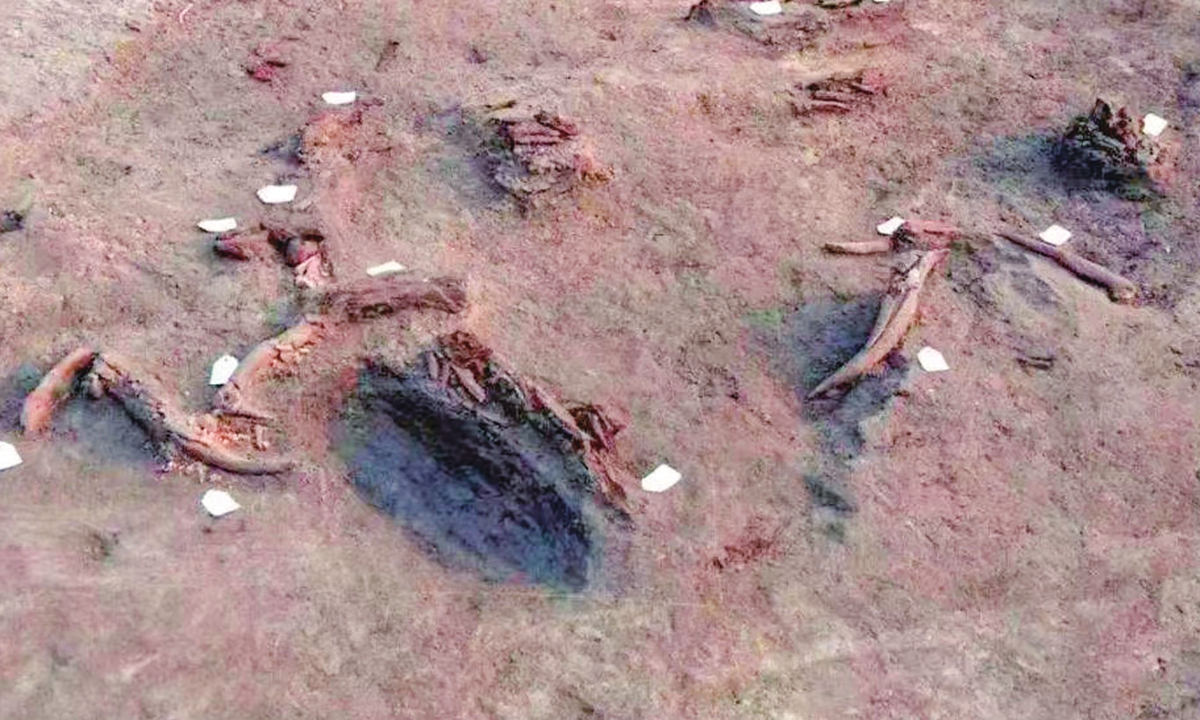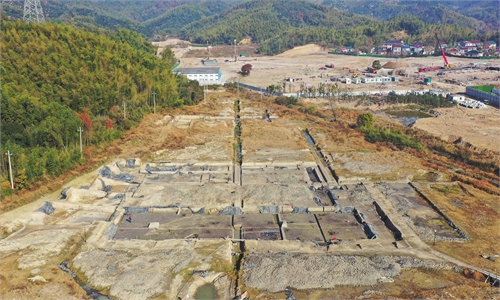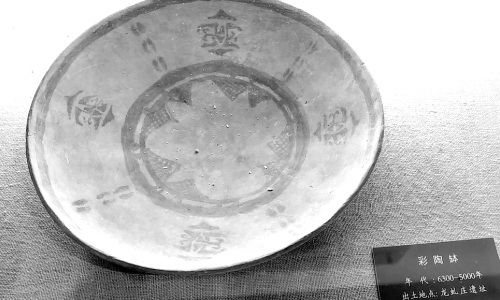ARTS / CULTURE & LEISURE
Chinese roots

The site of Nanzhuangtou Ruins Photo: Courtesy of Sina Weibo
Nanzhuangtou Ruins: Earliest domesticated chickens ever been foundBetween 9,700 and 10,500 years ago, people in the northern part of China, what is now North China's Hebei Province, made pottery and kept the world's earliest domesticated chickens.
Located in a village in Xushui county, Hebei Province, the Nanzhuangtou Ruins were accidentally discovered by brick factory workers in 1986. It was excavated in 1986, 1987, and 1997. The three excavations have revealed an area of about 300 square meters.
In 1986, workers from a nearby brick factory dug up an antler and reported it to the local cultural bureau. Experts found signs of cutting on the antler, which suggested that people once lived in the area long before the village was established.
During the excavations, archaeologists found the remains of ash pits, pottery, stone and bone tools, wooden sticks, as well as a large number of animal bones and plant pollen.
Among the animal bones, archaeologists discovered the world's oldest chicken bones, dating back to around 11,000 years ago.
Archaeologists also discovered more than 50 pottery pots and bowls, most of which were decorated with shallow and thin cord patterns.
In addition to chickens, animal skeletons such as the remains of dogs, wolves, pigs, deer, birds, fish and turtles were also discovered.
Another thing that attracted the attention of experts was the discovery of the bones of buffaloes, a type of animal that requires abundant water resources.
Experts inferred that during a long period of time in the late Pleistocene (geological epoch that lasted from about 2,580,000 to 11,700 years ago) and the early Holocene (approximately 11,650 years to present), the climate had changed greatly to a warmer environment with abundant water resources.
The pollen analysis also confirmed the above speculation. Unlike the current massive dry plain areas in northern China, around 11,280 years ago, the environment was a cold and dry Ice Age climate, and then the temperature rose, precipitation increased, and lakes and swamps accumulated.
However no remains of grain was found at the Nanzhuangtou Ruins during excavations, indicating that the culture had not yet entered an agricultural era.
Global Times



